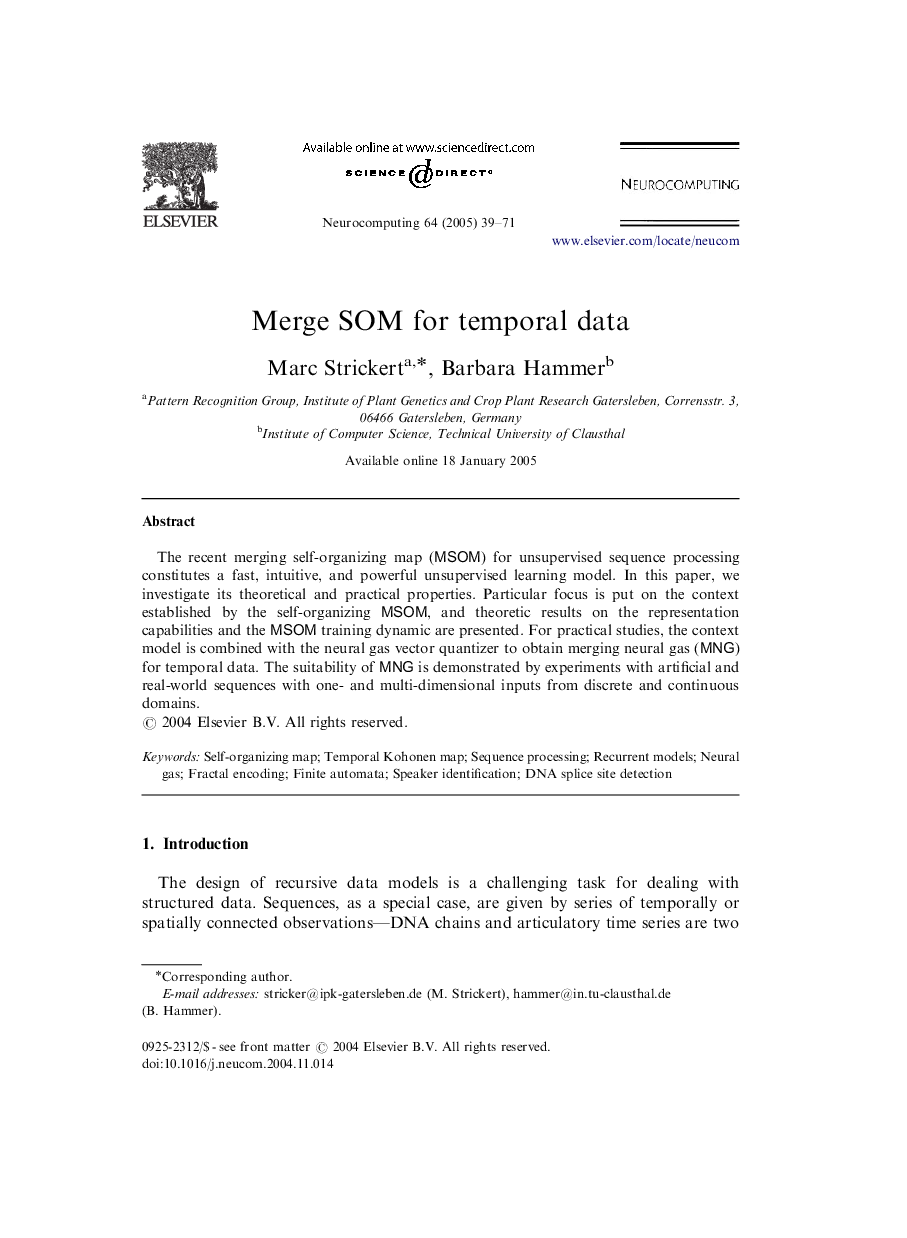| Article ID | Journal | Published Year | Pages | File Type |
|---|---|---|---|---|
| 9653560 | Neurocomputing | 2005 | 33 Pages |
Abstract
The recent merging self-organizing map (MSOM) for unsupervised sequence processing constitutes a fast, intuitive, and powerful unsupervised learning model. In this paper, we investigate its theoretical and practical properties. Particular focus is put on the context established by the self-organizing MSOM, and theoretic results on the representation capabilities and the MSOM training dynamic are presented. For practical studies, the context model is combined with the neural gas vector quantizer to obtain merging neural gas (MNG) for temporal data. The suitability of MNG is demonstrated by experiments with artificial and real-world sequences with one- and multi-dimensional inputs from discrete and continuous domains.
Related Topics
Physical Sciences and Engineering
Computer Science
Artificial Intelligence
Authors
Marc Strickert, Barbara Hammer,
